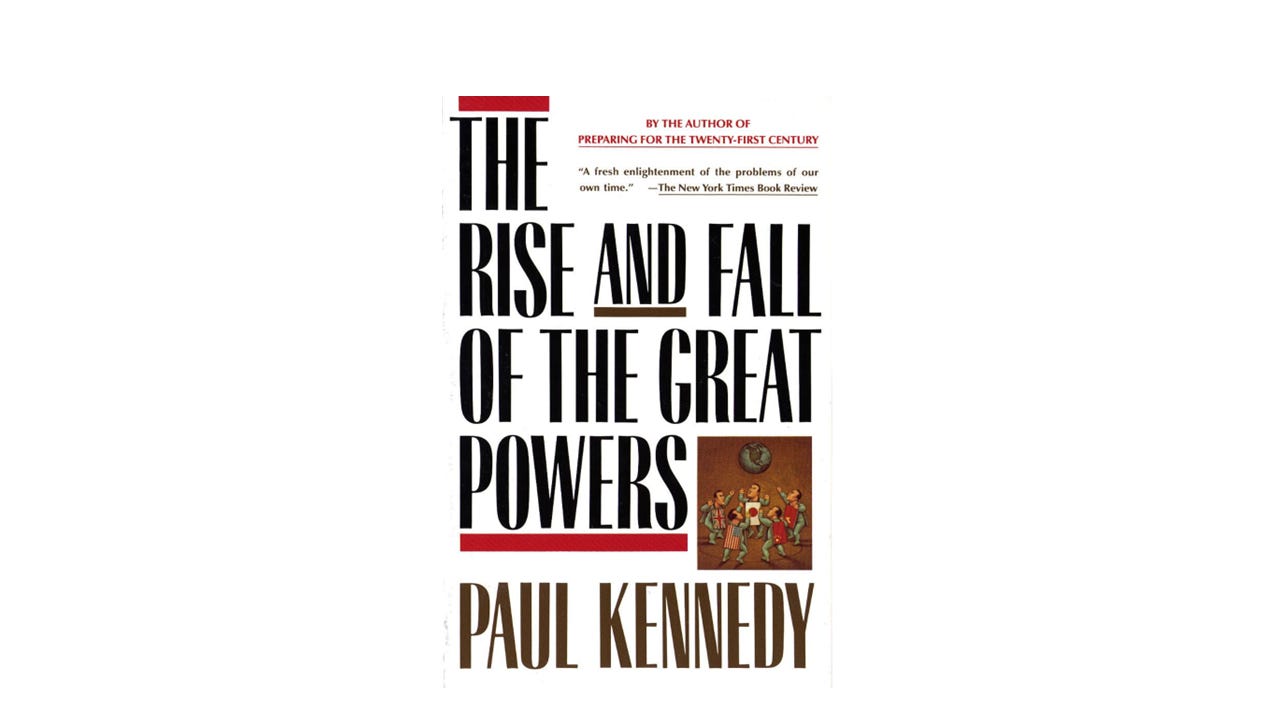The Rise and Fall of the Great Powers: Revisiting S&P 500 Performance
Often recommended as a must-read by Ray Dalio, the book charts the emergence of the US as a global superpower since WWII. Today, it still is.
Over the past 25 years, the US stock market, particularly the S&P 500 index, has been among the top performers globally. This strong performance is largely attributed to the dominance of American companies, especially in the technology sector. Think of the likes of Apple (AAPL 0.00%↑), Salesforce (CRM 0.00%↑), Netflix (NFLX 0.00%↑), and Tesla (TSLA 0.00%↑) to visualize just how dominant the country has been at the cutting edge. Enormous wealth has been created through innovative offerings that simultaneously advanced mankind and made the S&P 500 index one of the best-returning indices in the world.
The S&P 500 has been the gold standard for equity investing for decades. It is often touted as a cornerstone of a diversified portfolio, and for good reason. Spanning the 500 largest publicly traded companies in the US, the index reflects the American economy's resilience, innovation, and dynamism. But what makes it such a consistent winner? As I recently revisited Paul Kennedy's The Rise and Fall of the Great Powers: Economic Change and Military Conflict from 1500 to 2000, it became clear that America’s enduring advantages—economic, geopolitical, and cultural—continue to endure.

America’s Enduring Advantages
Paul Kennedy’s book offers a sweeping analysis of why some nations thrive while others falter. Written decades ago, Kennedy highlights several advantages intrinsic to America's rise: its geographical isolation, abundant natural resources, and ability to attract talent worldwide. These factors have fostered economic stability and an unparalleled environment for innovation and entrepreneurship.
As I read Kennedy’s observations, I was struck by their relevance. The US still enjoys a robust demographic profile, technological leadership, and deep capital markets that few other countries can rival. Despite global economic shifts and rising competition from different nations, the US remains the birthplace of industry-leading companies, from tech giants like Google and Microsoft to emerging players in artificial intelligence. This relentless ability to innovate and dominate global markets feeds directly into the S&P 500’s performance, making it a uniquely compelling investment vehicle.
The Genius of Index Investing
In an article I wrote some time ago, I argued that index investing offers an elegant solution for managing the ever-changing tides of market relevance. The S&P 500, in particular, excels at this. By design, the index automatically renews itself, adding rising stars while shedding companies that can no longer compete. This natural selection mechanism ensures that investors are continuously exposed to the strongest players in the market without needing to manage their portfolios actively.
Consider this: companies like Kodak and Sears once dominated the American economy, but their eventual decline did not weigh down the S&P 500. The index replaced them with new giants like Amazon (AMZN 0.00%↑) and Palantir (PLTR 0.00%↑). This adaptability makes the S&P 500 not just a reflection of the American economy but its engine, constantly evolving to capture the opportunities of tomorrow.
Comparing to Other Countries
Until six years ago, I invested almost exclusively in Asian stocks. While I did well and had the homegrown advantage of familiarity, I could have done much better if I had broadened my universe to include American companies. While many countries and indices may appear promising, they often lack the structural advantages that underpin the S&P 500’s long-term success. Over the last few decades, most groundbreaking companies have emerged from the US. Whether it is OpenAI revolutionizing natural language processing or Tesla redefining the automobile, America has proven to be the global epicenter of innovation.
Since moving to the United States in 2021, I have found myself deeply influenced by its environment of creation, learning, and innovation. There is an infectious energy here—a collective belief that the next big idea is always within reach. This atmosphere inspired me to co-found Psyntel, a software company that leverages AI to support mental health professionals and to begin writing my first book, Suit Yourself. These ventures, alongside a vastly different investment focus, represent a significant shift from my life while living in Asia, underscoring how uniquely fertile the US is for innovation and ambition.
Conclusion
Investing in the S&P 500 is not just about betting on the U.S. economy; it is about investing in a system that has consistently adapted, innovated, and thrived. As Paul Kennedy’s historical insights remind us, America’s enduring advantages provide a strong foundation for its economic dominance and, by extension, the strength of the S&P 500. Combine this with the index’s built-in adaptability, and you have an investment vehicle that has stood the test of time without any sign of slowing down.
Follow me on X.com (formerly Twitter) @ConsumeOwnTech
Subscribe to Consume Your Own Tech Investing FOR FREE to receive a welcome email with the following:
My Top 10 high-conviction portfolio positions, combining value and growth stocks
Book recommendations in investing, consumer, and tech sectors
Monthly articles delivered straight to your inbox


